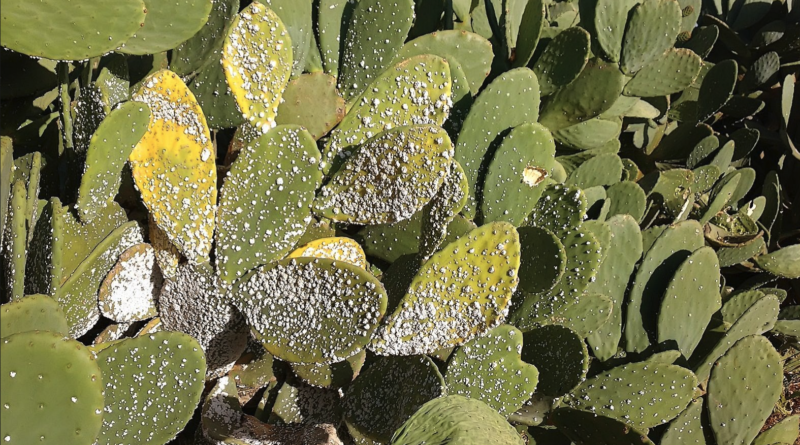The versatile fruit threatened by invasive pest
Smallholder farmers in the Maghreb region have long relied on cactus or prickly pear (known locally as Handia) as a vital source of food and feed. Its ability to thrive with minimal water and tolerate heat makes it an ideal crop for arid zones.
Not only is the fruit a nutritious food source for humans, but it can also be used to produce medicine and cosmetics. Additionally, the plant’s pads are a valuable source of animal feed, particularly in areas where water and feed resources are scarce. Furthermore, cactus pear plays a crucial role in soil and biodiversity conservation.
However, the recent invasion of the cochineal species Dactylopius opuntiae has wreaked havoc on cactus plantations throughout Morocco, causing significant economic losses for the entire value chain. Since its initial discovery in Saniat Berguig of Doukkala in 2014, the pest has spread rapidly to other regions, devastating crops and leaving farmers with no means of control.
The pest invasion is widely spread and it has been reported to be seen in homes in norther Morocco; as reported on Facebook. Rumors have been spreading in the region of the eradication of the invasive pest. However, local witnesses have denied the news.
The spread of pests and diseases in the region is a direct consequence of climate change, necessitating the development of sustainable and practical control options that do not rely solely on chemical sprays. The impact of Dactylopius opuntiae has been catastrophic in Morocco, where entire crops have been destroyed, negatively impacting the socio-economic well-being of the farmers who depend on cactus pear production to increase their incomes.
Efforts are currently underway to develop environmentally sound and cost-effective control measures to reverse the damage caused by the invasive pest. It is crucial to find a solution that is sustainable and practical for smallholder farmers, who are among the most vulnerable to the impacts of climate change. Cactus pear has been a reliable source of food and income for generations of smallholder farmers, and it is essential to preserve this valuable crop for future generations.


